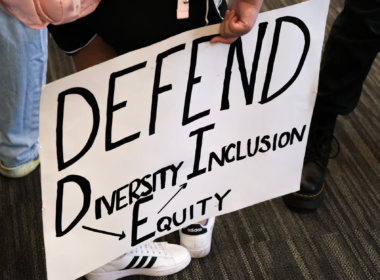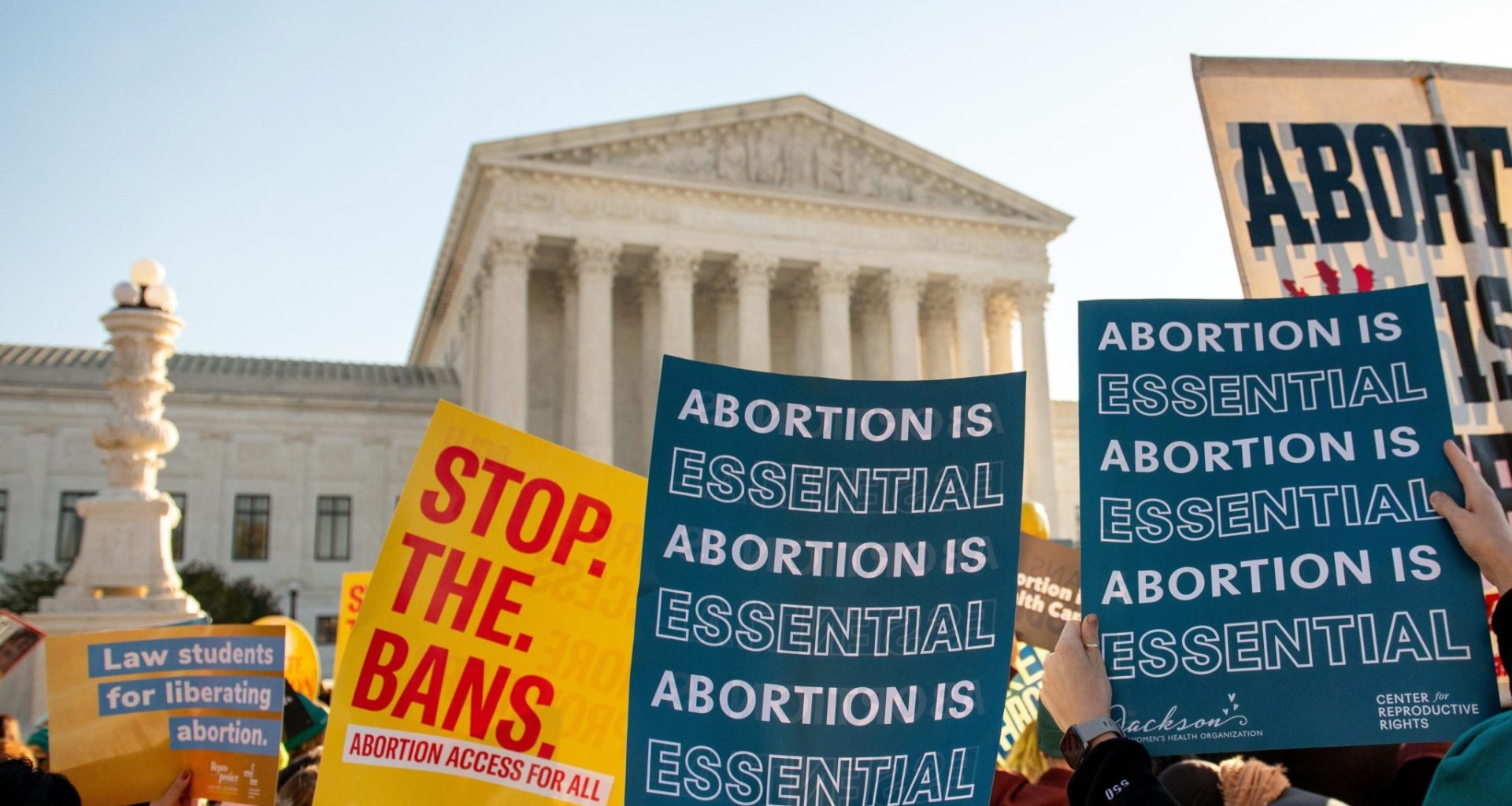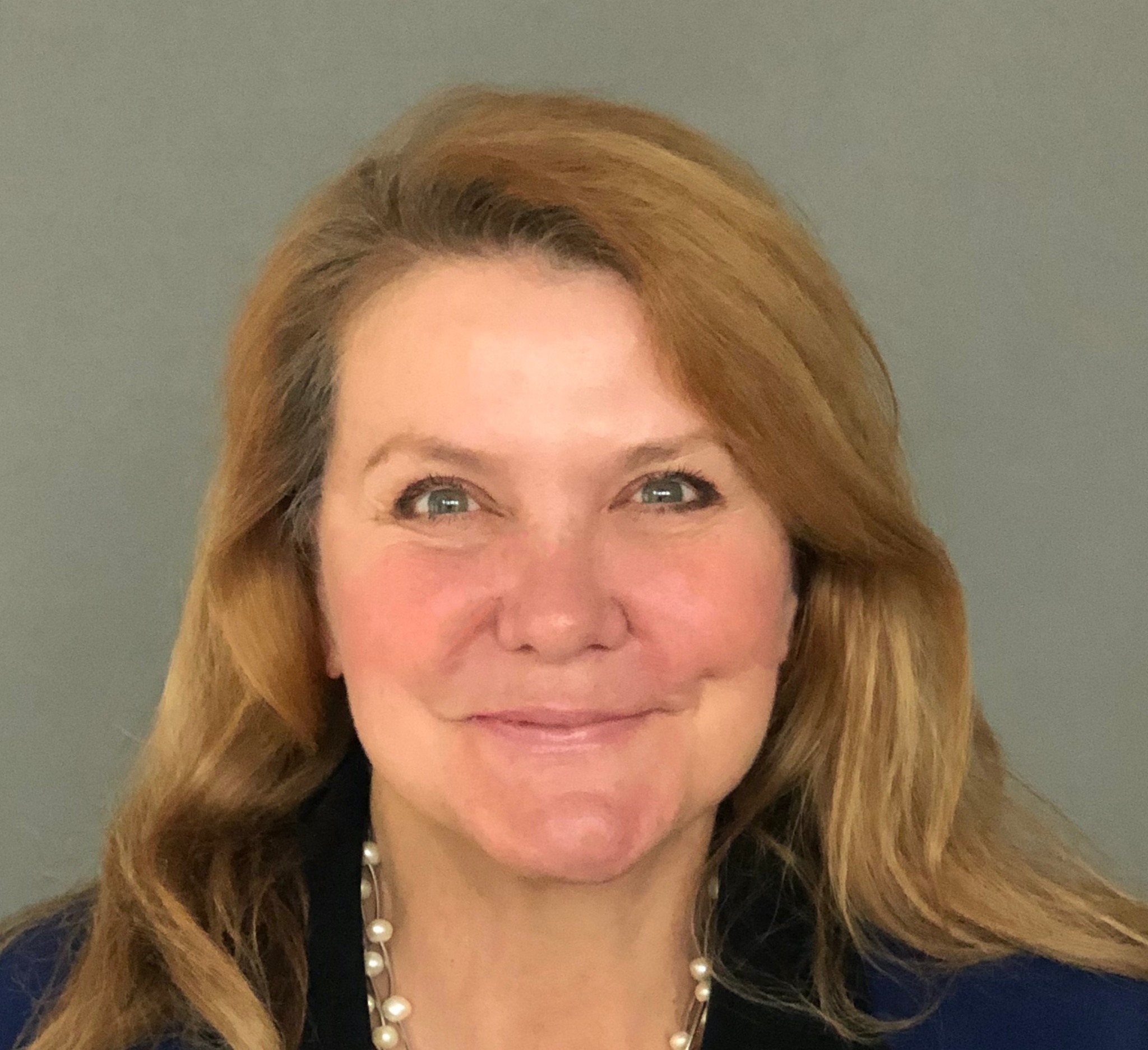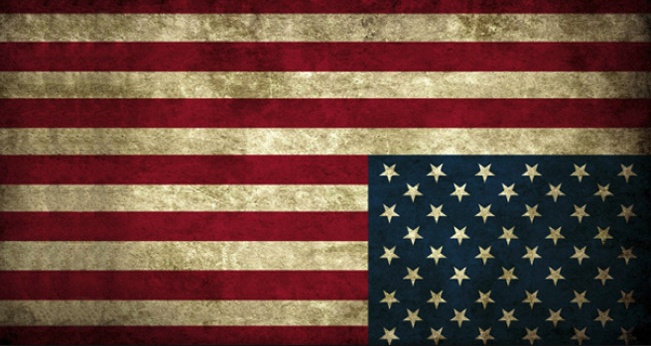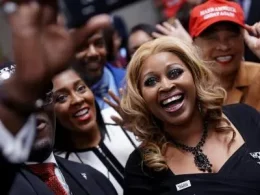Last year in Texas, over 14,500 people, mostly women, were raped.[1] Nationwide, the vast majority of victims know their assailant,[2] yet fewer than 6%[3] of reported cases lead to incarceration.[4] In Dobbs v. Jackson Women’s Health, the Supreme Court relegated the US to only a handful of nations, none of them economically successful or politically stable,[5] where abortions can be banned outright, including in cases of rape.
Since the opinion’s issuance less than three months ago,[6] it has been critiqued by thousands. Moderates lament the US’s reversionary posture, which will hamper post-covid economic recovery, while liberals rue the gender-based classification system now imbedded into law. Many have detailed how Dobbs discriminates against racial minorities and poor women, violates equal protection, subverts precedent, and will exacerbate pay inequality, sentencing more children to live below the poverty line. Few, however, have defined the legal contradictions embraced by a federalist Court and its GOP allies, proponents of limited government who have exponentially expanded government and tools of surveillance.
An originalist court defied originalism to reach the desired result
The 6 justices who signed Dobbs are Federalists, “originalist” jurists who interpret the US Constitution as it was originally written, or as they believe it was intended.[7] Had they applied true originalist review, Roewould have been affirmed.
The Federalist essays remain essential today in discerning the founders’ original intentions.[8] During the Constitutional Convention,[9] the heaviest debate concerned whether to adopt a bill of personal rights on which the government could not intrude. Alexander Hamilton was the chief opponent to the Bill of Rights, opposing it out of fear that identifying such rights would have the unintended effect of excluding rights that were not listed, which is precisely what the Dobbs court just did. Hamilton argued that since the Constitution was drafted to control and limit the government, the government had no powers whatsoever beyond those specifically granted. He asked, for example, why should the First Amendment specify that the government could not establish religion or limit the press, when there was no language in the Constitution that granted government that affirmative power to begin with?
Against this opposition to adopting a Bill of Rights at all, James Madison, regarded as the father of the US Constitution,[10] drafted the 9th Amendment.[11] The 9th Amendment, as Madison drafted it in 1791 to save the Bill of Rights, still states today:
“The enumeration in the Constitution, of certain rights, shall not be construed to deny or disparage others retained by the people.”[12]
In other words, because liberty retained by the people was expansive while government was limited, if the Constitution does not expressly confer the right to infringe, the government has no such right. State-forced birth proponents today ask where the Constitution permits abortion, but a true originalist inquiry would ask where the Constitution forbids it.
Since 1965, the Supreme Court has held that the 9th Amendment specifically protects personal privacy against governmental intrusion: “The Ninth Amendment simply shows the intent of the Constitution’s authors that other fundamental personal rights should not be denied such protection or disparaged in any other way simply because they are not specifically listed in the first eight constitutional amendments.”[13] It was also the 9thAmendment- not the 14,th which Dobbs relies on- that governed the original consolidated cases of Roe v. Wade:[14] “While the Ninth Amendment right to choose to have an abortion is not unqualified or unfettered, a statute designed to regulate the circumstances of abortions must restrict its scope to compelling state interests.”[15]
While the founders were alive, living under common law, abortions were performed up to the point of “quickening,” or movement in the womb, which is around 24 weeks. Alito admitted as much, granting, “abortion was a crime at least after quickening throughout common law.”[16] Any plain reading of ‘a crime after quickening’ means it was legal before quickening, throughout centuries of common law. The men who drafted the US Constitution were products of common law- they came from common law in England, and they lived under common law in the newly forming states. Because abortion plainly existed during their time and for centuries before them under common law, a true originalist interpretation would conclude that if they wanted to restrict abortion when they wrote the Constitution, they would have. This historical contradiction likely compelled Dobbs’ ‘originalist’ majority to ignore Roe’s original basis- the 9th Amendment, ratified while the founders were still alive in 1791- and instead force the analysis through the 14th Amendment, ratified in 1868, long after they were dead.[17]
Violating the 9th Amendment, skipping the Federalist discussions, ignoring common law in effect when the Constitution was written, and instead undergirding Dobbs with state laws passed during slavery- when women and black babies were chattel- suggests the Court’s originalism is merely legal pretext to achieve desired political ends.
Dobbs’ enforcement will exponentially expand government, surveillance, and control
Under Dobbs, abortion can now be legislated by the dictates of each individual state. When Dobbs was issued, 22 states had already set laws in place to ban abortion as quickly as possible. Nine of those states had an abortion ban still on the books from before Roe, 13 states enacted a trigger ban, and 5 states had a near-total abortion ban enacted after Roe.[1]
[1] https://www.guttmacher.org/article/2021/10/26-states-are-certain-or-likely-ban-abortion-without-roe-heres-which-ones-and-why
As these new state bans emerge, whatever their variants and contours, they all hold one truth: they will not self-effectuate. States will need extraordinary tools of government surveillance to enforce their new civil and criminal anti-abortion laws.
Although the procedural aspects are still emerging, each state ban will require a new or expanded state agency- or hundreds of municipal agencies- to review medical records in maternity cases.
Exceptions for rape and incest will invite the state to review family histories, social media posts, private correspondence, personal journals, mental health records, and any private memoranda about the victims’ and their families’ lives. States that allow abortion only when medically necessary to save the life of the mother will rely on expanded legal authority to obtain, monitor, review and question women’s private medical records. Pregnancy will now come with a built-in HIPPA waiver in favor of the state. Worse, ‘necessary to save the life of the mother’ inquisitions will have the intended effect of reducing a physician’s willingness to perform an abortion to save the woman, as each abortion will trigger prosecutorial review, disputation, and second guessing with the underlying implication that it was “murder” or “homicide” under the new state abortion law. (Did she really have preeclampsia? Could it have been controlled? Did you administer antihypertensive, anticonvulsant or corticosteroid medications first, and did you allow sufficient time for it to take effect before you terminated?)
Some drugs that treat other life threatening illnesses like cancer are also abortifacients, like methotrexate. Doctors will be reluctant to administer those life-saving drugs to pregnant women with pre-existing conditions, further decreasing their life expectancy. Even for women who do not have pre-existing health concerns, questions of immediacy present across the full range of life-threatening medical emergencies that arise during pregnancy and delivery. In every case of termination, a forced-birth prosecutor will suggest the mother could have lived another day, week, or month without termination, leading doctors to err on the side of waiting and increasing the likelihood the woman will die, all under the watch of greatly expanded state authority.
Enforcement will vitiate presumption of innocence in criminal cases
Abortion bans will not only expand the size and scope of state government surveillance, they will also shift traditional criminal evidentiary burdens. Under decades of well established criminal law, traditional notions of due process protect the criminally accused.[18] The burden of proof rests with the prosecution, not the accused. “The presumption of innocence … (is) guaranteed by the Due Process Clause of the Fourteenth Amendment.”[19] By requiring doctors to prove the medical necessity of terminating any pregnancy to save the life of the mother, abortion bans will shift the burden to the accused physician, subverting the presumption of innocence.
There can be no question that medical review under threat of criminal prosecution will diminish the number of abortions performed, even when the woman will die without it. The promise of prosecution presents a risk and evidentiary hurdle few doctors would voluntarily undertake, not least due to the extraordinary time suck and emotional expense of litigation. Practicalities and human frailties guarantee that there will always be some cohort of doctors who will refrain from saving the life of the mother to avoid legal risk.
Treaters aren’t the only ones exposed to criminal prosecution post-Dobbs either. Right to life advocates will not relent until women themselves are criminally prosecuted for murder when they abort, subjecting women in some states to the death penalty. End Abortion Now, along with 21 aligned advocacy groups, filed an amicus brief in Dobbs,[20] and they advocate severe prosecution for women who abort, regardless of why. Key factions of the Southern Baptist Convention, the country’s largest Protestant denomination, also support criminal prosecution for women who abort, also regardless of why.[21] While efforts to criminalize women are currently downplayed by the right, once the political backlash has settled and new laws are finalized, criminalization efforts will gain traction because the risk of political fallout will be lower.
Dobbs: Free speech will depend on where you live
State by state abortion bans will not only greatly expand government surveillance and the regulatory state, they will also curtail freedom of speech. Medical providers and advocates from pro-choice states will have to provide services to women from out of state who have the financial means, family support, and transportation to get there. To serve, abortion clinics and advocates must let women know they exist. However, signs, publications and social media posts identifying which states offer abortions, and describing resources that may be available to help desperate women, such as defraying the costs of transportation, time off, and child care, can be deemed to ‘aid or abet’ someone pursuing an abortion.
Conduct, in the criminal context, can include speech. “Speech integral to criminal conduct” is a narrow exception to traditional protections under 1st Amendment law, and such speech can be banned if a court determines the speech is meant to induce a crime.[22] The 1st Amendment protects the right to advocate for social changes, including changes in draconian abortion laws. But advocacy deemed to “help cause illegal conduct,” such as supporting abortion in states where it is outlawed, may be prosecuted.
The line between advocacy, free speech, and inducement to commit a crime is already a thin one, and abortion bans will turn it into a string that can be blown by political winds across state lines. Affiliates of the National Right to Life Committee (NRLC), the most powerful anti-abortion organization in the nation,coordinated campaigns to overturn Roe in every state. Immediately upon the passage of Dobbs, the NRLC proposed model legislation to criminalize communications “by telephone, the internet or any other medium of communication” that facilitate or even inform women about options to terminate their pregnancy.
Stressing the importance of “an effective enforcement regime” under Dobbs,[23] lawyers representing the NRLC urge that criminal penalties alone will not suffice. In June, their general counsel issued a partisan memorandum on anti-abortion enforcement efforts, arguing that:
“Abortion-rights advocates are conspiring on how abortion-on-demand can be protected in States that will adopt pro-life laws. A key part of that strategy is for radical Democrat prosecutors to refuse to enforce pro-life laws post-Roe… If we rely… on criminal penalties (alone), these counties will (become) sanctuaries for abortion-on-demand.”[24]
The standing recommendation is for states to criminalize not just the act of terminating an unwanted pregnancy, but to criminalize speech that leads to the decision. In their model statute, NRLC recommends extending criminal penalties to anyone who assists, counsels, or advises the pregnant victim, which includes giving instructions over the telephone, the internet, or any other medium of communication regarding self-administered abortions, such as the morning after pill; hosting or maintaining a website or internet service that facilitates efforts to obtain an illegal abortion, and providing referrals to an abortion provider.[25] The censorship implications are obvious. It is not difficult to envision how providing information about the existenceof abortion options will be construed as inducement to obtain an abortion.
Although the Supreme Court previously ruled[26] that under the First Amendment, one state could not bar citizens from another “from disseminating information about an activity that is legal in (the disseminating) state,” that was coincidentally the same Court that issued Roe, now reversed. In reversing Roe and allowing states to ban abortion outright, the Dobbs court will likely affirm state-specific limitations on free speech in furtherance of the Court’s and the GOP’s over-riding goal to ban abortion. Soon, like privacy and healthcare, protections under the First Amendment will become fragmented, and will also depend on where people live.
Texas: Pioneers in state-forced birth
No state has been more aggressive in seeking to mandate state-forced birth than Texas. Soon after Dobbs was issued, the Texas Attorney General motioned the state’s supreme court to appeal a temporary stay and to resurrect a 1925 Texas law that criminalized abortion.[27] Paxton argued that the 1925 statute was never repealed but was only unenforceable during Roe, and that abortion providers should be criminally liable and subject to prison terms under the 1925 statute, effective immediately. Paxton tweeted[28] in July that “Texas’s pre-Roe statute criminalizing abortion is 100% good law…” The nine republican justices on the Texas Supreme Court agreed, and ruled that Texas’ 1925 statutes were still valid.[29]
Texas also adopted both a trigger law and a bounty law, which promises $10,000 plus attorneys fees to any private person who brings a successful civil action against anyone else- family member, neighbor, friend, foe, or complete stranger who:
“knowingly engages in conduct that “aids or abets” the performance or inducement of an abortion, including paying for or reimbursing the costs of an abortion through insurance or otherwise… regardless of whether the person knew or should have known that the abortion would be performed or induced in violation of this subchapter…[30]
Texas’ promise of a $10,000 bounty can be sought from anyone who does anything that helps a woman, like a taxi driver, even if they are unaware that the woman was getting an abortion. Query what taxi or uber driver will pick up a visibly pregnant woman knowing it could cost him $10k.
Texas’ bounty law, adopted in 2021 as the “Texas heartbeat act,” outlawed abortions after the detection of a fetal heartbeat, typically six weeks after conception. In its post-Dobbs “trigger law,” however, Texas eliminated the six week window altogether, and now outlaws abortion at “fertilization.” Aborting a fertilized egg, a zygote that is too small to see,[31] is now a first degree felony in Texas.[32] There is an exception if abortion is proved necessary to save the life of the woman. There are no exceptions for rape or incest.
As of this writing, none of the legislators in Texas have stepped forward to adopt the 48,000 Texas children currently living in foster care,[33] or the estimated 50,000 children they will be forcing into the state each year.[34] State of Texas appropriations to feed, clothe and pay for the additional children have also yet to pass, while it is assumed that state funds to surveil, prosecute and punish will be swift and plentiful.
The Court’s legitimacy has passed
Amy Coney Barrett recently asked what the big deal is with giving birth, given the ease of adoption under safe haven laws. The Court is apparently unaware that whether the baby is kept or relinquished, pregnancy doesn’t just happen once, and it doesn’t just last a day. It can happen repeatedly, leaving women pregnant, at risk, and less employable for 9 to 10 months out of every year- until they reach menopause.
Disregarding Equal Protection mandates, the majority in the Supreme Court’s 2022 term served de facto death warrants. Deaths will rise immediately from illegal abortions and life-threatening pregnancies that should be terminated but won’t be. (Dobbs) Already staggering death rates from gun violence will increase along with the number of handguns on the street. (Bruen). The Court’s uneducated decision to block the EPA’s efforts on climate change (West Virginia v. EPA) makes a mockery of federal treaty-making authority, pisses on the Paris Accord, and stymies cooperation from all nations trying to save life on earth.
In doing the dirty work of the NRA, utilities, and religious zealots who put them on the bench, six members of this Court have not only violated their charter under Marbury v. Madison,[35] they have taught us that ‘federalism’ and ‘originalism’ are mere pretexts for ‘partisan power grab.’ James Madison would abort each of them.
[1] https://worldpopulationreview.com/state-rankings/rape-statistics-by-statel see also https://www.statista.com/statistics/232524/forcible-rape-cases-in-the-us-by-state/
[2] https://www.thegomezfirm.com/blog/known-sexual-abuser-percent/
[3] https://cmsac.org/facts-and-statistics/
[4] https://www.washingtonpost.com/business/2018/10/06/less-than-percent-rapes-lead-felony-convictions-least-percent-victims-face-emotional-physical-consequences/
[5] https://worldpopulationreview.com/country-rankings/countries-where-abortion-is-illegal
[6] Assuming Moot is published in September
[7] https://repustar.com/fact-briefs/were-half-current-supreme-court-justices-appointed-president-who-lost-popular-vote-his-first-term
[7] https://news.harvard.edu/gazette/story/2021/03/in-audiobook-takeover-noah-feldman-lidia-jean-kott-explore-how-federalist-society-captured-supreme-court/[8] https://guides.loc.gov/federalist-papers/full-text
[9] https://www.constitutionfacts.com/us-founding-fathers/
[10] https://www.whitehouse.gov/about-the-white-house/presidents/james-madison/
[11] Annals of Congress. The Debates and Proceedings in the Congress of the United States. 42 vols. Washington, D.C.: Gales & Seaton, 1834—56, found at https://presspubs.uchicago.edu/founders/documents/amendIXs7.html
[12] https://www.law.cornell.edu/constitution/ninth_amendment
[13] Griswold v. Connecticut, 381 U.S. 479 (1965)
[14] Roe v. Wade, 314 F. Supp. 1217
[15] Id.
[16] Alito’s draft, found at found at https://www.documentcloud.org/documents/21835435-scotus-initial-draft
[17] https://www.archives.gov/milestone-documents/14th-amendment
[18] Taylor v. Kentucky, 436 U.S. 478 (1978)
[19] Id.
[20] https://endabortionnow.com
[21] https://www.tennessean.com/story/news/religion/2022/06/15/southern-baptist-convention-sexual-abuse-reform-apology-survivors/7538054001/
[22] Giboney v. Empire Storage & Ice Co. (1949)
[23] https://webcache.googleusercontent.com/search?q=cache:1imuUnthvTwJ:https://www.nrlc.org/wp-content/uploads/NRLC-Post-Roe-Model-Abortion-Law-FINAL-1.pdf+&cd=1&hl=en&ct=clnk&gl=us
[24] Id.
[25] Id.
[26] Bigelow v. Virginia, 421 U.S. 809 (1975)
[27] https://www.washingtonpost.com/nation/2022/07/02/texas-supreme-court-order-abortion/
[28]https://twitter.com/KenPaxtonTX/status/1542792157299367936?ref_src=twsrc%5Etfw%7Ctwcamp%5Etweetembed%7Ctwterm%5E1542792157299367936%7Ctwgr%5E%7Ctwcon%5Es1_&ref_url=https%3A%2F%2Fwww.washingtonpost.com%2Fnation%2F2022%2F07%2F02%2Ftexas-supreme-court-order-abortion%2F
[29] https://www.washingtonpost.com/nation/2022/07/02/texas-supreme-court-order-abortion/
[30] https://capitol.texas.gov/tlodocs/87R/billtext/pdf/SB00008F.pdf
[31] https://www.medicalnewstoday.com/articles/296751#how-big-is-my-baby
[32] https://capitol.texas.gov/tlodocs/87R/billtext/pdf/HB01280F.pdf
[33] https://datacenter.kidscount.org/data/tables/3061-children-in-foster-care-0-17#detailed/2/any/false/574,1729,37,871,870,573,869,36,868,867/any/8263,8264
[34] https://www.texastribune.org/2022/05/09/texas-abortions-by-the-numbers/
[35] Marbury vs. Madison, 1 Cranch 137, 5 U. S. 174.
